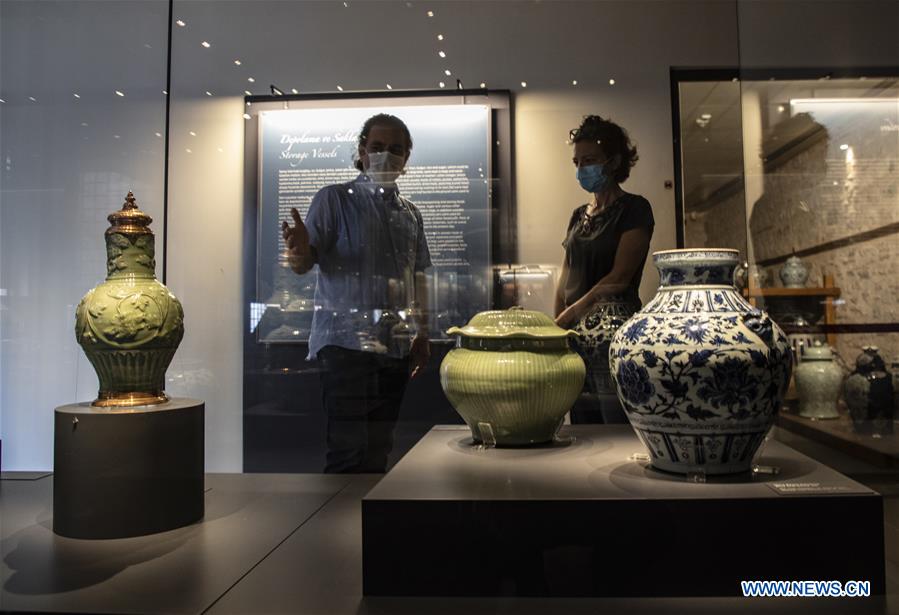Chinese porcelains used in Ottoman palace on display in Istanbul


"They also loved the yellow ones, which were known as the Emperor's yellow, and they were using these pieces during Muslim's holy Ramadan, as the color was symbolizing both the nobility and also simplicity," Tufan added.
Later in the 16th century, Chinese artists started to write some verses from the Quran over the porcelains. During this period, the Muslim countries and the Ottoman Sultans purchased many samples to be used as dinner sets, Tufan added.
Deniz Esemenli, a retired academic and writer of several books on Ottoman history, said Chinese porcelains dominated and adorned not only the Ottoman palaces but the entire world until the 16th century.
"China initiated and significantly contributed to the development of porcelain production in the Ottoman Empire," Esemenli told Xinhua.
"Starting from the 19th century, Turkish artists have produced many pieces by imitating Chinese patterns, and mostly inspired by the blue and white samples," he said.


















